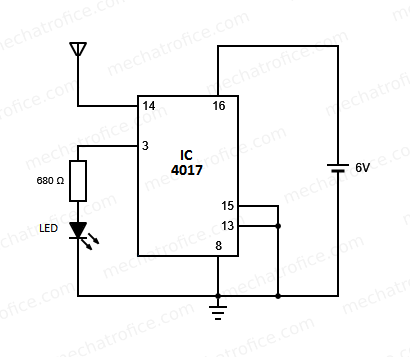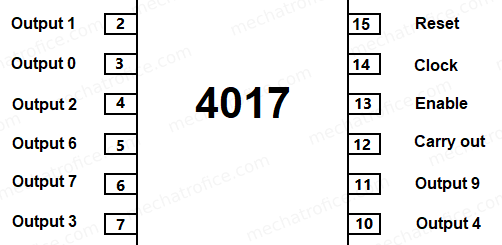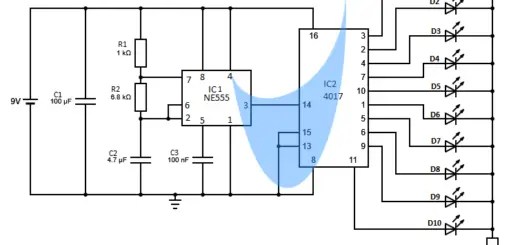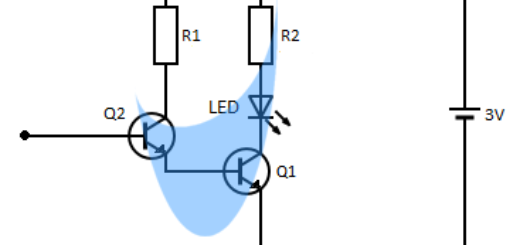Non contact AC voltage detector circuit
A non-contact AC detector is an easy and safe AC live line tester device. It can detect the presence of an alternating current through a conductor without any electrical contact.
This is a very simple circuit using a 4017-decade counter IC. The output of the counter IC shifts from output 0 to output 9 for each positive edge of the pulse received at clock input pin 14.

As shown in the circuit, a probe or antenna is connected to pin 14 of the IC; a wire is enough for the purpose. The clock input of the 4017 IC has very high sensitivity, a small pulsating signal can provide an input clock for the counter. When the probe comes near to a current-carrying conductor an emf induced in the probe due to the magnetic field around the conductor. This emf gives the signal to the clock input.
As the LED has attached to one of the 10 output of the IC, the LED flashes once for 10 clock pulse inputs. Hence, in a normal 50HZ supply the LED flashes at a rate of 5 times per second. Hence the LED flashes and indicates as it reaches near to a charged line including insulated wires, concealed wirings, etc.
The sensitivity of the circuit will vary with the length and conductivity of the probe. Here it will be extra sensitive as it has connected with a wire or probe. It requires a proper grounding to work satisfactorily.
As a safety measure to avoid electric shock always make sure the circuit has no direct contact with the live terminals. Always use the probe over an insulated surface or use an insulated probe. Ensure complete electrical isolation between the circuit and charged conductors to prevent any accidental contacts.
Components required
IC – 4017
Resistor- 680ohms
LED – 5mm
Supply – 6v



How to change the range of antenna for non-contact voltage detection?
For example I would like to detect 220 VAC at 1 cm, 2 cm or 5 cm. Can I make these changes with potentiometer or 2 keys?
tnx
To some extent, you can adjust the range by varying the antenna length. But the detection range varies or it mainly depends on the intensity of the current through the AC phase than the circuit parameters. So, I don’t think it is possible to set accurate ranges of 1cm or 5cm. But you can experiment by changing antenna length or with a high-value resistor or potentiometer.
This circuit is very simple but works great! I built it on a solderless breadboard. I wound the end of antenna around my index finger 4 times to create a small “coil” at the end of the antenna wire. That made the antenna wire a bit more sensitive. I immediately used the detector to detect whether electricity was flowing to an overhead light fixture when I flipped a wall switch. It detected the current flowing through the wall fixture mains wire perfectly! Thanks for posting this valuable circuit for others to build and use!
Why this IC is used there are number of IC please tell me
Because of very fewer circuit connections and good sensitivity.